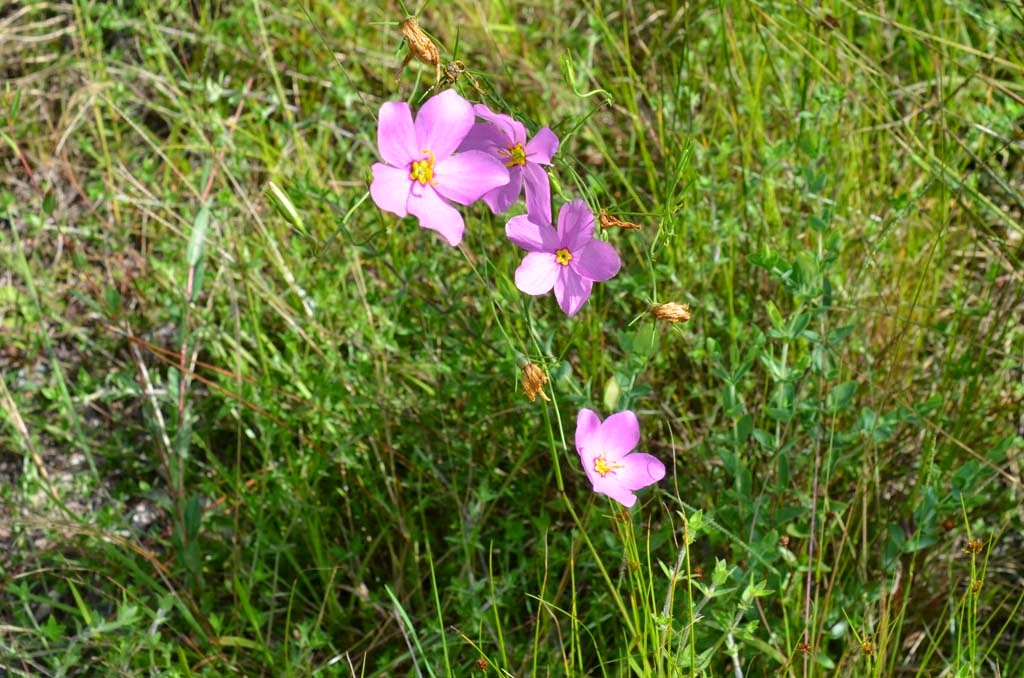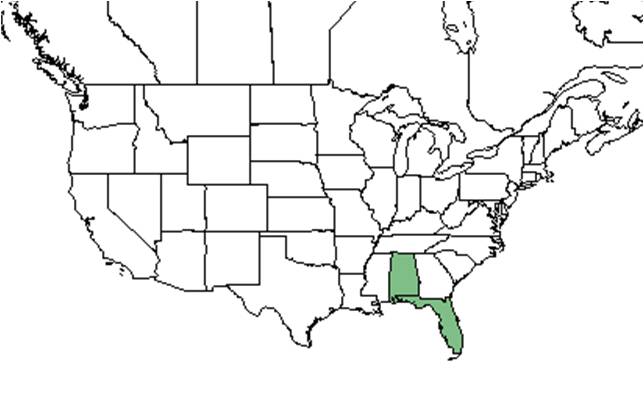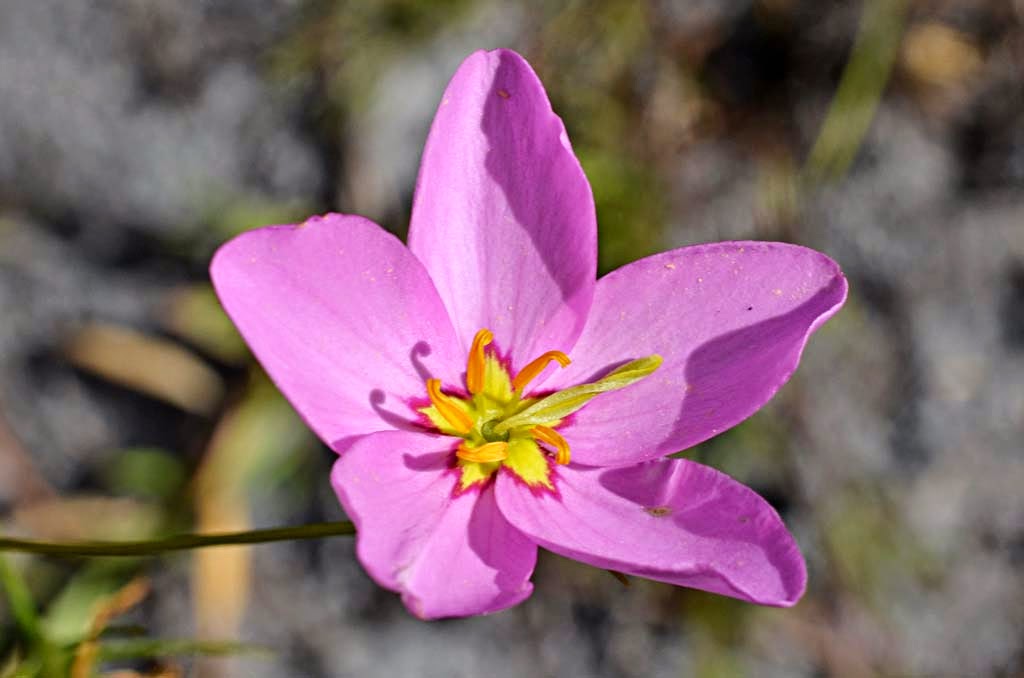Sabatia grandiflora
| Sabatia grandiflora | |
|---|---|

| |
| Photo by Wayne Matchett, SpaceCoastWildflowers.com | |
| Scientific classification | |
| Kingdom: | Plantae |
| Division: | Magnoliophyta - Flowering plants |
| Class: | Magnoliopsida – Dicotyledons |
| Order: | Gentianales |
| Family: | Gentianaceae |
| Genus: | Sabatia |
| Species: | S. grandiflora |
| Binomial name | |
| Sabatia grandiflora (A. Gray) Small | |

| |
| Natural range of Sabatia grandiflora from USDA NRCS Plants Database. | |
Common name: Largeflower rose gentian
Contents
Taxonomic notes
Description
S. grandiflora is an upright native annual herb with showy pink flowers on an almost leafless stems, that can reach up to 1 meter tall. The leaves are opposite, linear, inconspicuous, and fleshy. The flower is a 5-pointed star, deep to pale pink, with a yellow and red mark at the base of each petal that forms a small yellow star. The twisted yellow stigma and the protruding green ovary are held terminally and in upper leaf axils. The fruit is a small capsule.[1]
Distribution
Sabatia grandiflora is distributed in the Coastal Plain from Florida to Alabama and Virginia[2] with disjunct populations in western Cuba.[3]
Ecology
Habitat
In the Coastal Plain in Florida and Georgia, Sabatia grandiflora occurs in pine-wiregrass-saw palmetto flatwoods, karst pond shores, and longleaf pine wiregrass communities.[4] Within its distribution in the Coastal Plain, habitats include moist sites, wet prairies and flatwoods, and bogs.[1]
Phenology
Flowers and fruits in June and July.[4][5]
Pollination
Sabatia grandiflora was observed at the Archbold Biological Station to host bees such as Bombus impatiens (family Apidae) and sweat bees from the Halictidae family such as Augochlorella aurata, Halictus poeyi, Lasioglossum coreopsis, L. nymphalis, L. puteulanum and L. tamiamensis.[6]
Conservation, cultivation, and restoration
Cultural use
Photo Gallery
Flower of Sabatia grandiflora Photo by Wayne Matchett, SpaceCoastWildflowers.com
References and notes
Florida State University Robert K. Godfrey Herbarium database. URL: http://herbarium.bio.fsu.edu. Last accessed: November 2015. Collectors: Robert K. Godfrey, J.M. Kane, Edwin Keppner, R.A. Norris. States and Counties: Florida: Bay, Putnam, Taylor, Wakulla, Washington, Volusia. Georgia: Thomas. Compiled by Tall Timbers Research Station and Land Conservancy.
- ↑ 1.0 1.1 [[1]]Enature. Accessed: March 15, 2016
- ↑ [[2]]Encyclopedia of Life. Accessed: March 14, 2016
- ↑ Sorrie, B. A. and A. S. Weakley 2001. Coastal Plain valcular plant endemics: Phytogeographic patterns. Castanea 66: 50-82.
- ↑ 4.0 4.1 Florida State University Robert K. Godfrey Herbarium database. URL: http://herbarium.bio.fsu.edu. Last accessed: November 2015. Collectors: Robert K. Godfrey, J.M. Kane, Edwin Keppner, R.A. Norris. States and Counties: Florida: Bay, Putnam, Taylor, Wakulla, Washington, Volusia. Georgia: Thomas. Compiled by Tall Timbers Research Station and Land Conservancy.
- ↑ Nelson, G. PanFlora: Plant data for the eastern United States with emphasis on the Southeastern Coastal Plains, Florida, and the Florida Panhandle. www.gilnelson.com/PanFlora/ Accessed: 19 MAY 2021
- ↑ Deyrup, M.A. and N.D. 2015. Database of observations of Hymenoptera visitations to flowers of plants on Archbold Biological Station, Florida, USA.
